Apple
10 Qualities the 8th CEO of Apple Should Have

There’s been a lot of discussion as of late about who may be the next CEO of Apple. As a lifelong observer, dare I say fan, I care deeply about who is going to steward the company into a future that no one quite anticipated. Instead of opining on what I think of each individual rumored candidate, I thought it would be more productive to offer a checklist of what qualities I think that the 8th Apple CEO ideally should have.
The iPhone Air is the One Steve Would Use

For the first time in years, an iPhone truly made me feel something again. When this year’s new devices came out, I picked up the iPhone 17 Pro Max, but I quietly (or not so quietly) harbored envy towards those who bravely picked the iPhone Air. About a week ago, I finally caved and picked up my very own iPhone Air.
I am absolutely smitten with this device in a way that feels foreign yet nostalgic.
The Paradoxical iPhone Arrives: Launch Day Thoughts on Apple's 2025 Lineup

The new iPhones are indeed incredible. While I opted for the iPhone 17 Pro Max, the iPhone Air is truly unbelievable. When Apple called it a “paradox” I was skeptical, but that’s exactly what it feels like. The thinness and lightness is jaw dropping. It also happens to just be simply beautiful. The polished titanium rails look stunning, the closest thing we’ve had to the iPhone X design in years. While the mismatched corner radii of the plateau and the casing does bother me, it’s far less visible on the best of the four colors: space black. I cannot get over how sexy this phone is. It feels entirely new, but is visually reminiscent of the jet black iPhone 7, which is the best black they have ever shipped. Until today. While I haven’t bought an iPhone Air today, I know myself. I won’t be surprised if I make a switch mid-cycle.
Orangeness Beats Thinness: Thoughts on Yesterday’s Event
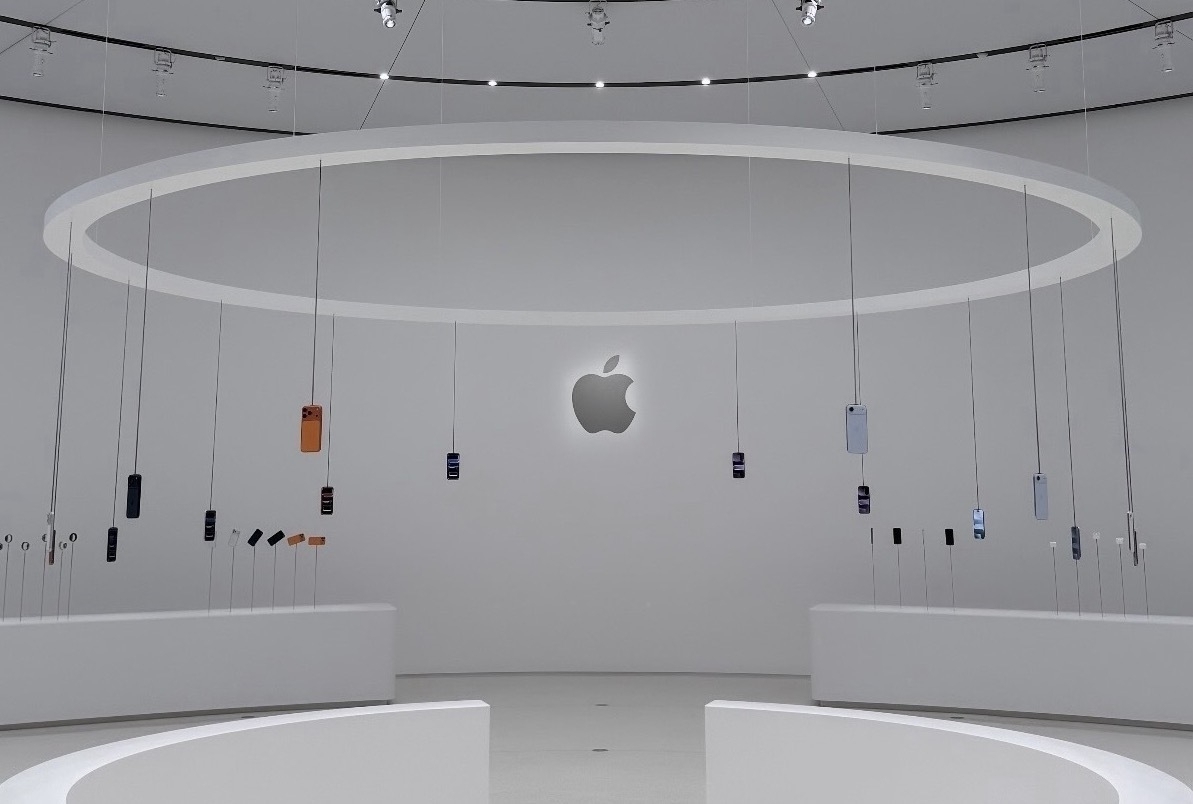 I don’t think there’s a whole lot of tea leaf reading to do after yesterday’s Apple event. The upgrades are fairly straightforward. But there are some intriguing notes that I wanted to share, so here we go…
I don’t think there’s a whole lot of tea leaf reading to do after yesterday’s Apple event. The upgrades are fairly straightforward. But there are some intriguing notes that I wanted to share, so here we go…
Keynotes are Bad Because Products Can’t Speak for Themselves Anymore
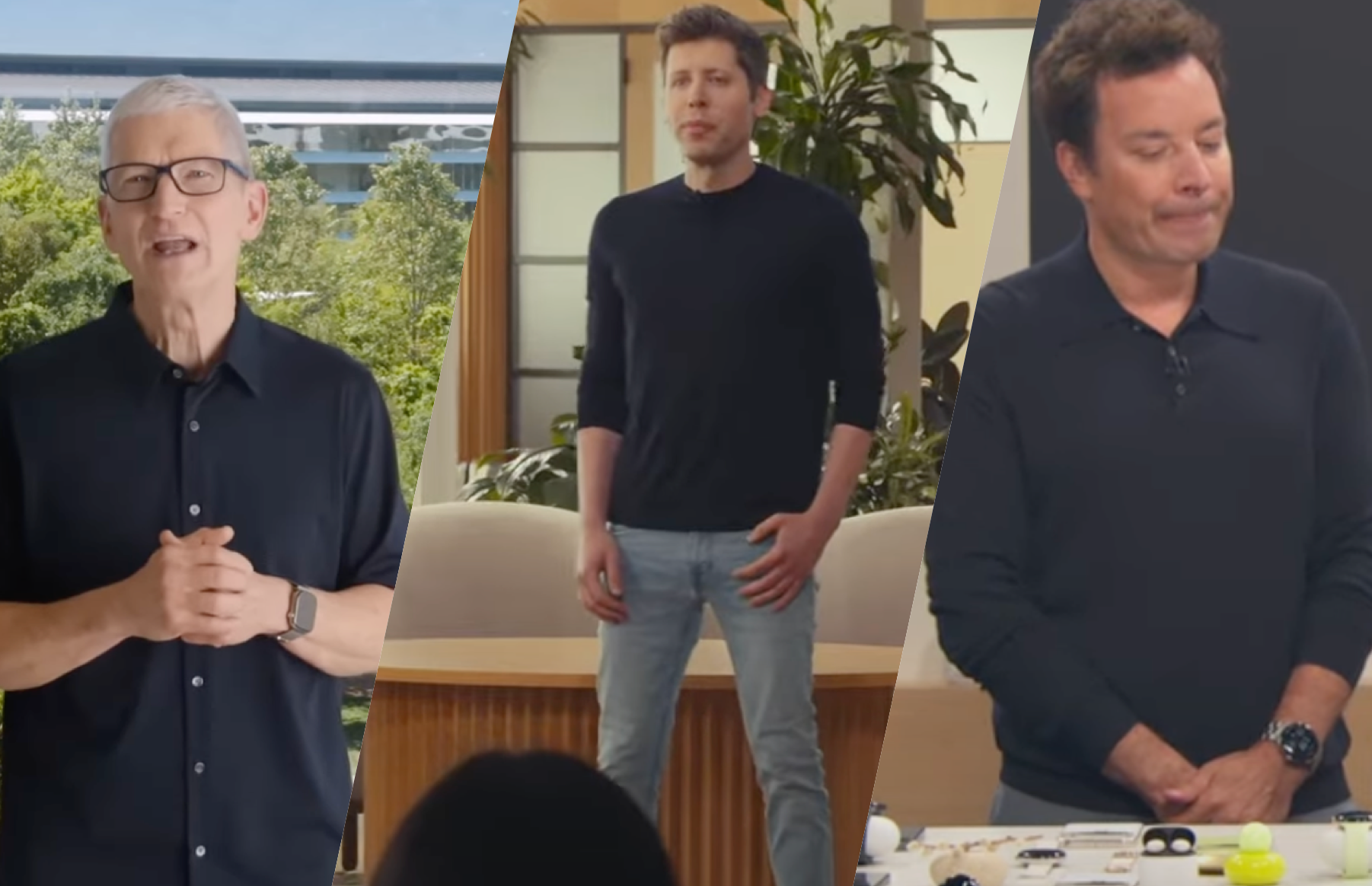
That Google event yesterday was very strange, from Jimmy Fallon’s general awkwardness to the uncomfortable QVC-style segment to the overuse of high profile celebrities. That’s already been discussed at length, so I won’t dwell on it. But it did get me thinking a lot about the state of product launches. Ever since the start of the pandemic we’ve been in a weird limbo, where some brands do videos and some host live keynotes. I’m personally a proponent of everyone returning to their pre-pandemic live formats, there are still a few holdouts, I’m looking at you Apple. Though the live stage presence is important for consumer confidence, human empathy, and an overall sense of community I think there’s actually something deeper going on.
Tinted Liquid Glass Should be the Future of User Interfaces on Apple Platforms

It’s certainly no secret that I am a huge fan of Apple’s new liquid glass design language. I know that’s not technically the name of the design system, in fact there actually isn’t one. Liquid glass is simply the core material of the new user interface, not the actual language. But for the sake of simplicity, I’m going to call it liquid glass regardless. I find the new look and feel to be extremely refreshing after more than a decade of flat visuals that generally lacked personality. Because liquid glass is so fluid, it comes to life when user interface elements move or get tapped. The playfulness of liquid glass hasn’t been up for debate, it seems to be generally well-received. But the actual look of the material, the clear component that is the namesake liquid glass, is controversial to say the least. Over the past few days I’ve started to think about how it could evolve over the next few years and I think I might have figured it out.
Ollama's New App Makes Running Local Models Even Easier
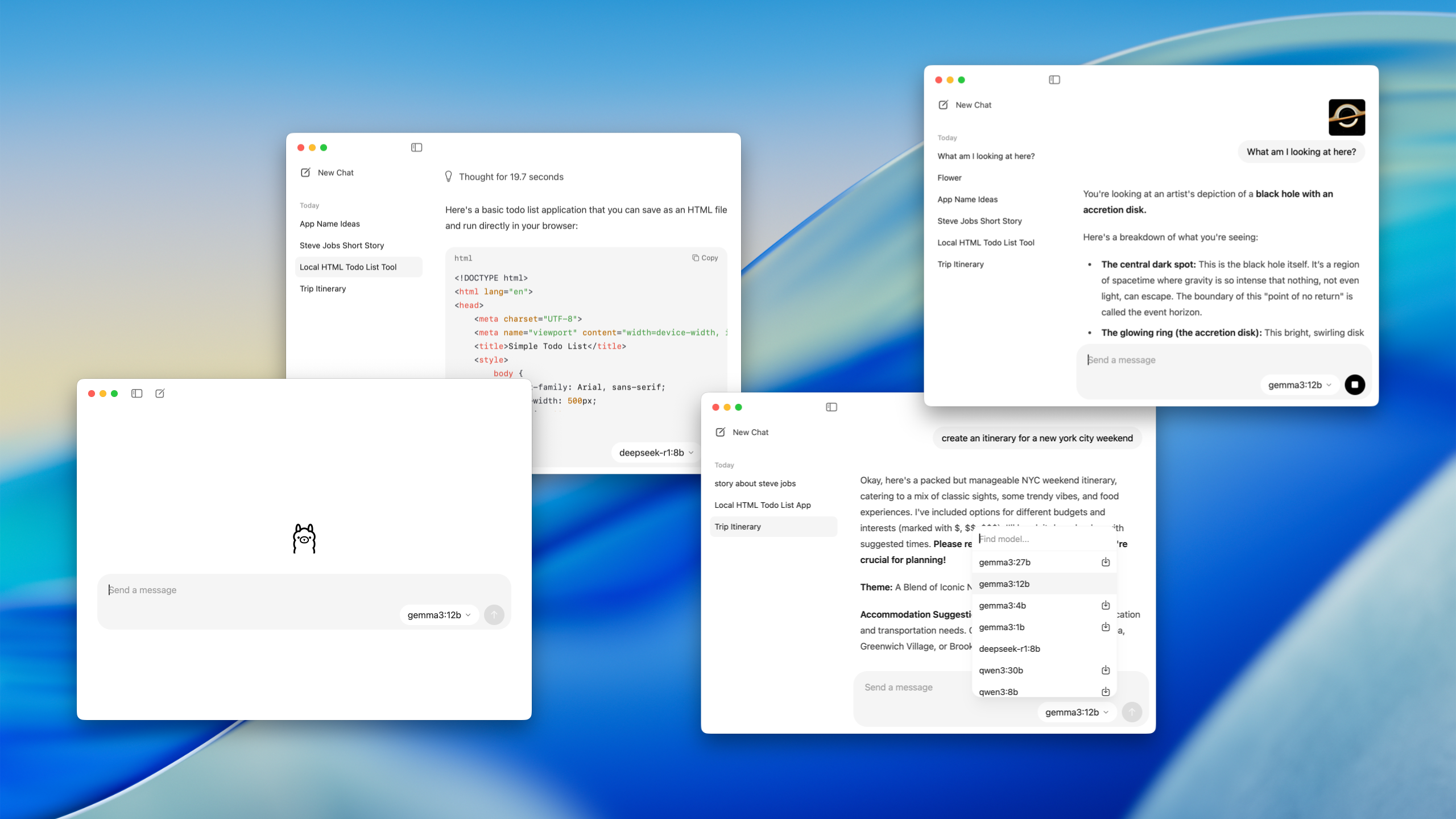
As a lifelong Mac user, I have a particular affinity for native applications. For a long time, most of the AI models were only useable through a web browser. But the model providers have slowly been rolling out fully native apps for their products. We now have native apps for ChatGPT, Claude, Copilot, Perplexity, among others. If you’re really into large language models, you likely also know a bit about using them via command line tools. Ollama has been the go-to solution for easily running models on your Mac via the Terminal. There have been third-party solutions that integrate with Ollama to offer proper graphic user interfaces, but none of them have quite made an impression. All of this makes local models a bit tedious to start using for the average person. The good news is that starting today you can easily install a native macOS Ollama app with the click of a button and get yourself using local large language models without ever launching the command line.
Yes, That Appears to be a Real iPhone 17 Pro
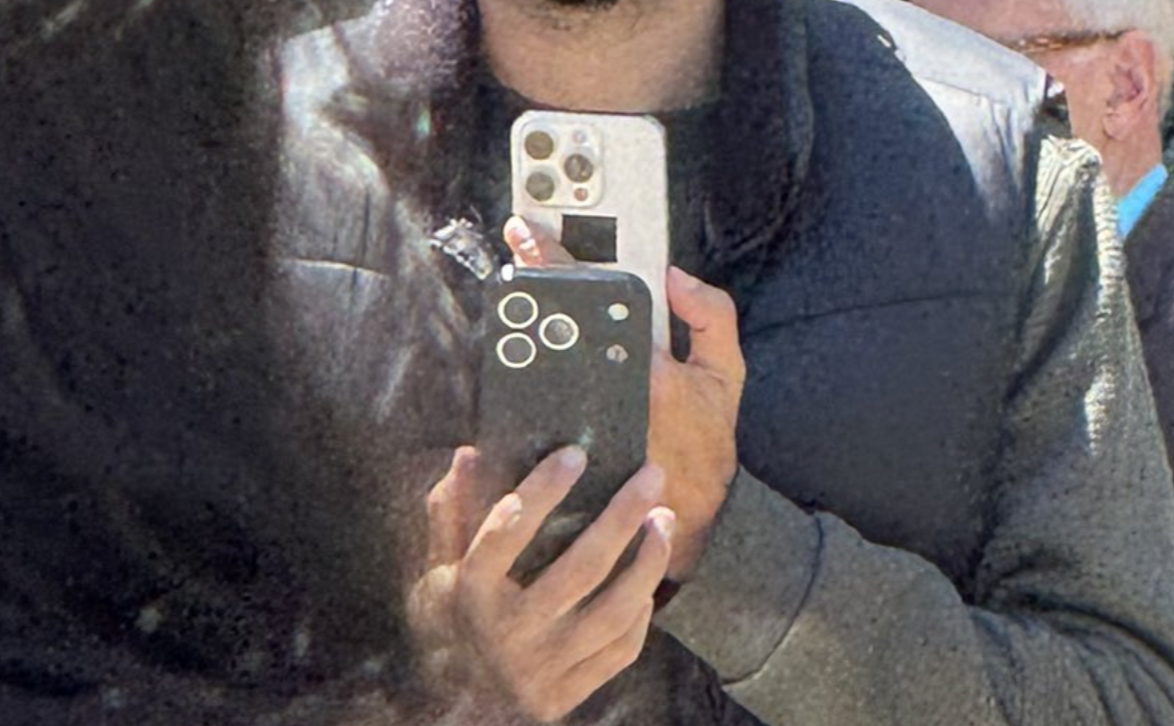
It looks like we just got our first look at a real iPhone 17 Pro. In an unlikely encounter in San Francisco, an X user by the name of Skyfops stumbled upon what must be an Apple employee testing an iPhone 17 Pro in one of Apple’s signature disguise cases. While there is some (very fair) skepticism surrounding this leak, I have heard that it is real.
18 Years Ago Today, iPhone Premiered and Everything Changed

On this day, 18 years ago, the iPhone went on sale for the very first time at Apple and AT&T Stores across the United States. I was going to write a long piece reminiscing about that special day, but I remembered that I already did that a few years ago when I was at 9to5mac for the 14th anniversary. I highly recommend returning to that piece to relive launch day and though you may have issues with images showing up, the text is still great too if I do say so myself.
Meta Goes on an AI Hiring Spree, What's Apple's Plan?

Apple should be the one on a hiring spree. Over the past few weeks, Mark Zuckerberg and Meta have kicked the hiring and acquisitions machine into high gear. The man knows he can’t miss out on the next platform shift and it shows. It wasn’t the metaverse and it wasn’t goggles, but it’s almost certainly some form of personalized super intelligence.
F1 Marks Apple's Acceleration into a New Era of Entertainment

Apple’s had a very good run with its string of successful streaming shows on TV+ over the past six years and has frequently been called “the new HBO." But the company has struggled to land a true hit with its feature films that it bestowed theatrical releases on. Sure, they’ve won Oscars for CODA and movies like Killers of the Flower Moon were well-received. But none of them have been able to capture the scale of a massive cultural moment. I have good news, I think F1 is finally that film.
The Curious Case of Apple and Perplexity: Do They Need Each Other?

Apparently it’s the season of acquisitions and hirings. Thankfully, this time Apple is also in on the action. According to Mark Gurman, Apple executives are in the early stages of mulling an acquisition of Perplexity. My initial reaction was “that wouldn’t work.” But I’ve taken some time to think through what it could look like if it were to come to fruition. Let me share where my head’s at.
“The Talk Show Live” Returns to Form—And It Was Great

While there was a lot of consternation heading into WWDC over Apple skipping John Gruber’s live taping of The Talk Show, it might have all been for the best. Instead of sitting down with Craig and Joz, who were both unlikely to say much more than they did during the day, we got to hear a really fun conversation between John and two of my favorite people on the internet: Nilay Patel and Joanna Stern.
WWDC 2025: Through Liquid Glass—No Longer Behind, Just Off to the Side
I was unusually concerned heading into this year’s WWDC, fully prepared to be disappointed. I feared that Apple would continue to be on weak footing after the Apple Intelligence failures of the past year. To my surprise, I feel very differently post-keynote. I worried that they wouldn’t acknowledge what happened last year, but Craig addressed it right out of the gate. While the acknowledgement itself is appreciated, we still have to wait quite a long time for the new Siri to rear its face… or voice, I guess? Fortunately, Apple did deliver a combination of new AI features that are sprinkled throughout their new operating systems. I am largely relieved, albeit still slightly on edge for reasons we’ll get into later. Over the course of the keynote, I began to relax as they subtly and intentionally introduced an array of practical AI use cases one by one. I am actually quite excited about some of these, but none of them compare to the triumph that is Apple’s new universal design language: liquid glass.
Apple’s Silence at "The Talk Show" Will Speak Volumes
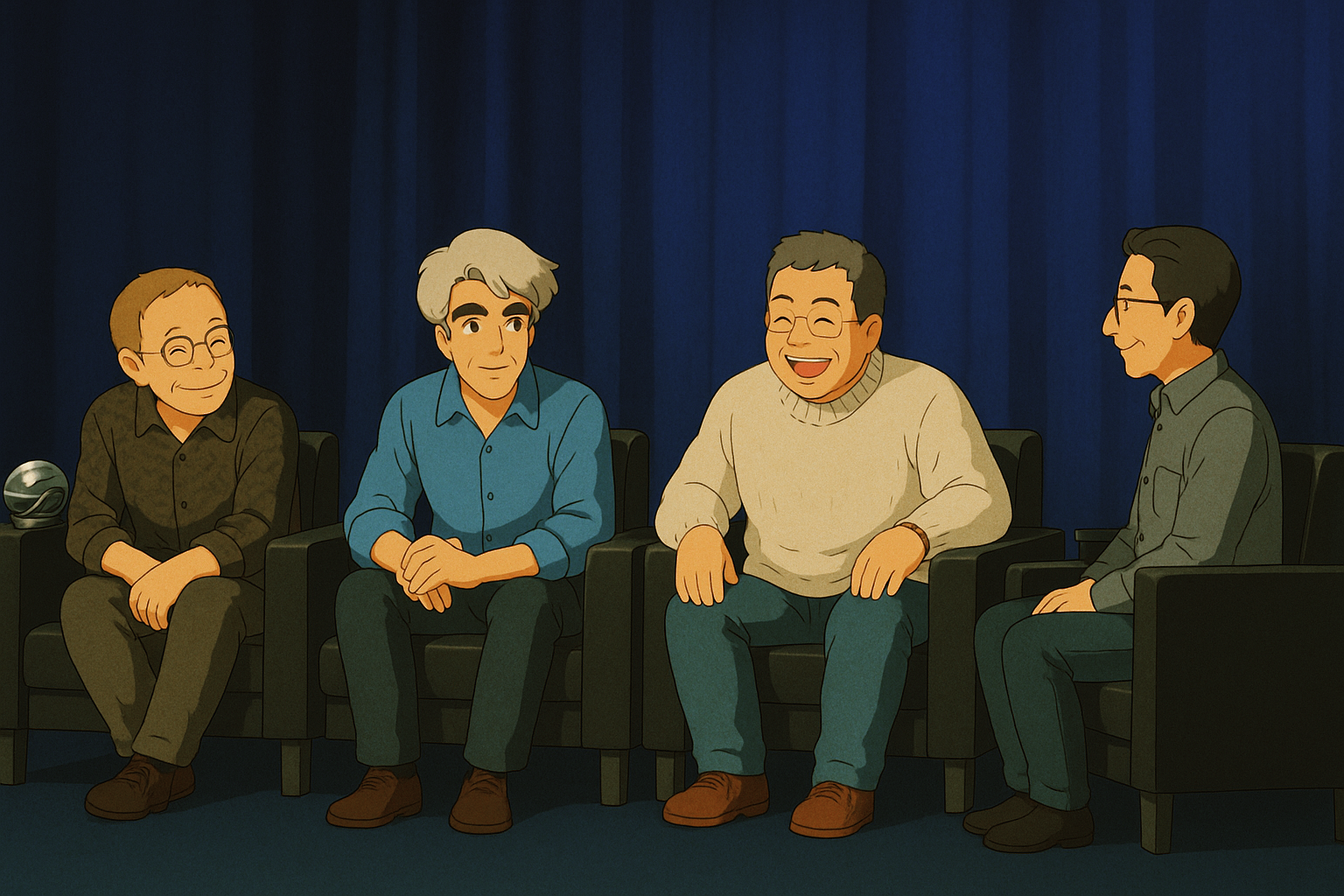
If you follow Apple at all, you’ve likely heard the news: Apple’s skipping John Gruber’s The Talk Show Live at WWDC this year. For a decade, it’s been tradition for Apple executives to join John on stage at the annual conference to recap the the keynote and dive deeper into the announcements. It is one of my favorite parts of that week, something I look forward to every year.
A Tale of Two IOs: What it Looks Like When Apple Doesn't Lead
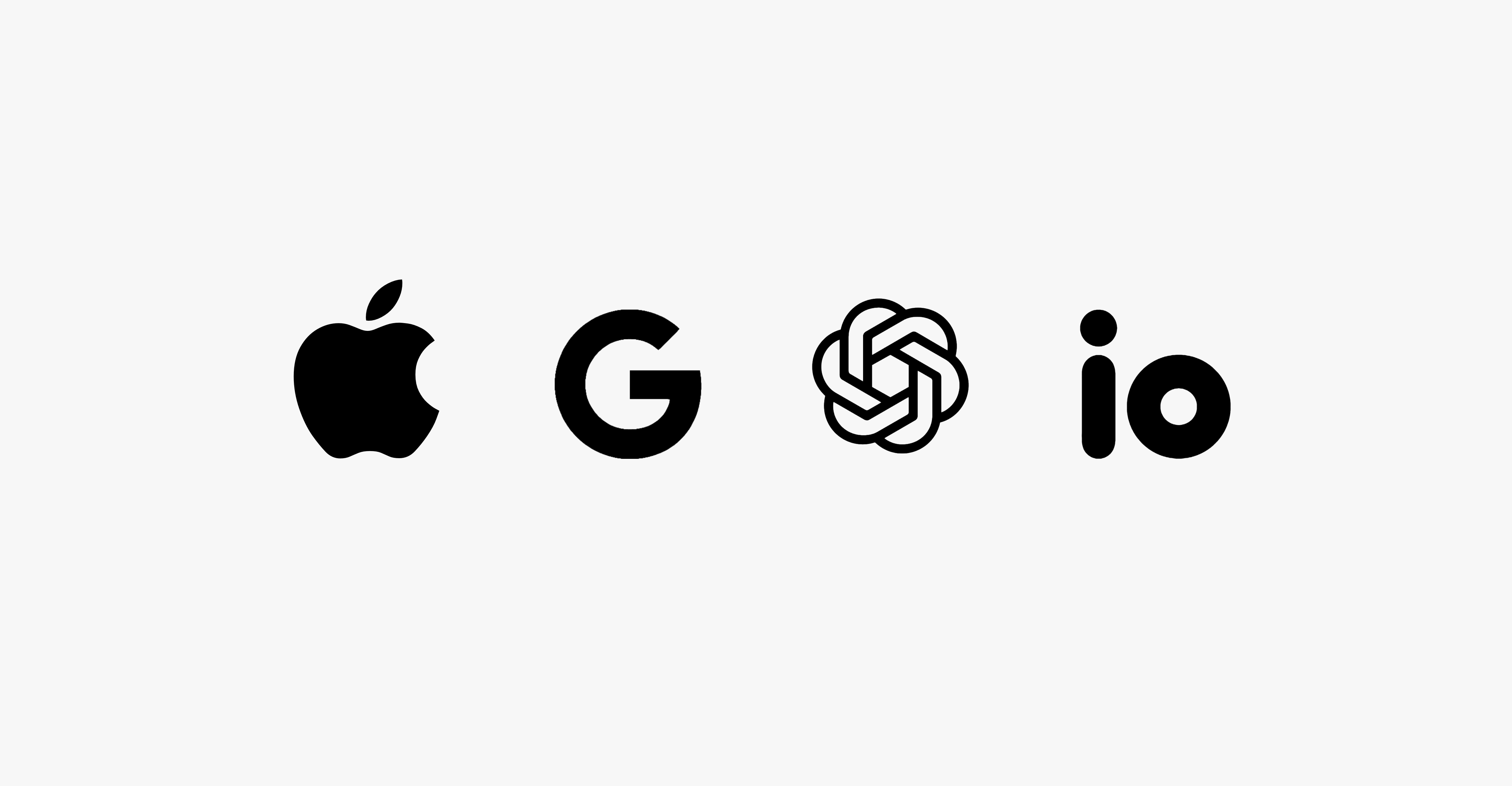
We are at more than just an inflection point; we’re at a moment where the global technological order may be about to fundamentally change. Don’t think about this just as an “iPhone moment” but as an “Apple acquires NeXT” event. A NeXTus event if you will. When Apple acquired NeXT, it kicked off a series of technological shifts that were completely unforeseen. It led to products like iMac, iPod, iPhone, iPad, and Apple Watch and technologies like Cocoa, Cocoa Touch, AirPort, Apple Silicon, among countless others. That acquisition fundamentally altered the course of human history and changed the technological landscape. I believe that the events of last week may have done the same.
Raycast for iPhone is the Launch Center Successor I've Always Wanted
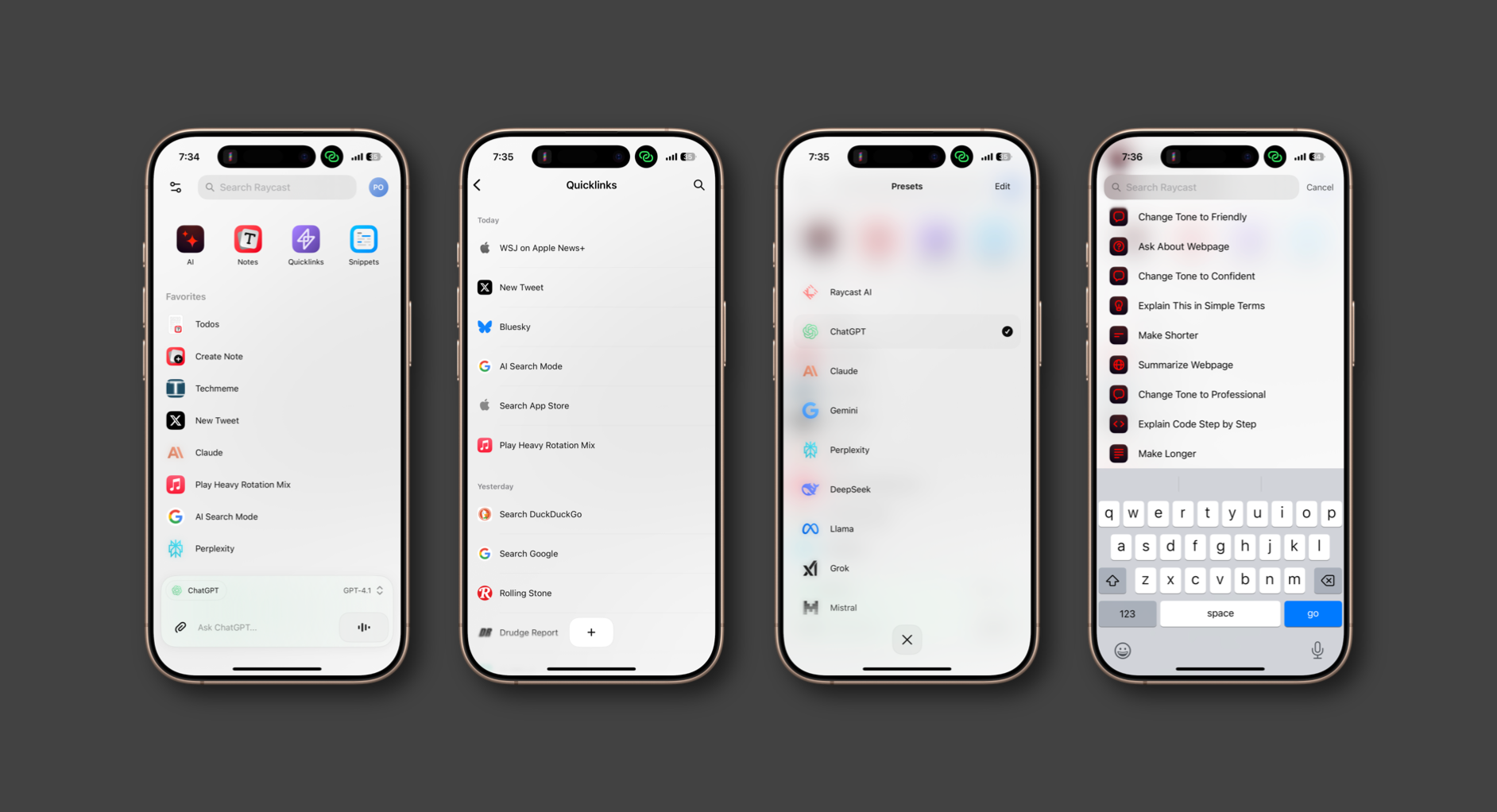
Before it was sort of abandoned I was a heavy user of Launch Center Pro. Apple enthusiasts and power users alike will almost certainly remember the powerful shortcut tool from Contrast that let you build out an extensive grid of quick ways to get things done. The app is technically still available on the App Store, but it has not been updated in years. I stopped using it once it appeared to fall by the wayside and after Apple began truly supercharging its own solution in Shortcuts. Launch Center Pro was very much a manually configurable tool, but had it kept up with the times I would imagine it would look something like the new Raycast for iOS. Funny enough, Raycast for iOS almost resembles the original version of Launch Center from 2011. We have sort of come full circle.
Jony Ive, Laurene Powell Jobs, and Sam Altman Walk into a Bar—Will They Walk Out with the Gadget of the Future?
The worst kept secret in Silicon Valley right now is that Jony Ive is helping Sam Altman build new gadgets. On the surface that may not seem like that much of a big deal. After all, Jony left Apple six years ago. But his career is inextricably linked to and was fundamentally shaped by Steve Jobs and Apple. I do not say that to diminish him in any way, it is simply the truth that he would not be “Sir Jony Ive” without the iMac, the iPod, the iPhone, the iPad, and the Apple Watch. For years he has seemingly tried to separate himself from his historical identity by working on a variety of different projects removed from technology, but he will forever be associated with those products whether he likes it or not. When he spends time on a technology, it carries a lot of weight. He learned from the best. As an example, his signature has been all over Airbnb’s app and branding—the company has been a major client of his firm LoveFrom. It is just one of the things that makes his teaming up with Sam Altman all that much more intriguing.
At first the rumors were relatively vague. The two of them were thinking about building some kind of AI-powered gadget together, whatever it may be. It has since become clear that the two intend to build a personal AI device, likely one that rethinks the role of the smartphone or even begins to replace some core functions. It is not all that surprising that they have fallen back on what could be a handheld device given the flat reaction to dedicated AI gadgets over the past two years, perhaps with the exception of the Meta Ray Bans. I personally think that lots of tech aficionados have sort of written Jony off in his post-Apple years. That has made it easier for him to explore whatever the project ultimately becomes. But it is unmistakable that the man who designed the iPhone, built his entire fortune on it, and shares the credit of creating it with his late best friend, believes that building competitive hardware is worth his time in 2025. That tells me that he not only believes in both Sam Altman and the power of AI, but also that he does not believe Apple is currently well-positioned to do something similar. The saga of Apple Intelligence blunders thus far may just help back that up. So Sam Altman and Jony Ive are working together to create the device of the future, what could that mean?
Many of the rumors seem to equate this product with some of those failed AI gadgets I mentioned. Some pundits think it could be screen-less or have an unusual twist that makes it less of an iPhone competitor and more of a new product category. I think they are all overthinking it. Whatever these two prolific giants of industry are working on is not the Humane AI Pin or the Rabbit R1. It cannot be a vanity project. OpenAI has been spitting out incredible new products at a ridiculously fast pace over the past several months and I do not see Sam Altman wasting anyone’s time. The fact that he wants to pull the project into OpenAI says as much. That suggests it might end up being close to a new kind of phone—perhaps familiar in shape, but powered by something so fundamentally different. When I hear “personal AI device” I hear “we want to replace your phone.” The way to do that, especially if you are a designer, is to make something relatively familiar.
Despite what many AI skeptics have believed, it seems to be bearing out that the chatbot is the interface of the future. At least the near future. A grid of app icons on a home screen could quickly be usurped by a text thread with a digital being that lives in your phone and can use your services for you. We are already heading in that direction. Just this week, Anthropic added connectors for Gmail and Google Calendar making Claude infinitely more personal and useful. OpenAI continues to expand its integrations with apps like Xcode and Notion, making it easier than ever to simply code an entirely new app or write an entire story on a fly with a short prompt. Gemini can access nearly every major Google service already. Microsoft Copilot can see what is on your screen and talk with you about it. Apple was hoping to be able to accomplish these things through a combination of an improved Siri, on-device models, and app intents. But I am not particularly optimistic it is going to all work as well as it needs to. App intents are built on Shortcuts which is already a fragile house of cards. I think they need to start over from scratch, but they are already so far behind that it is unclear if they can risk it. Especially as competitors take giant leaps seemingly on an almost weekly basis, heck, OpenAI just dropped two brand new models today in o3 and o4-mini.
A phone or phone-shaped device with hardware and software designed by Jony Ive and his team at LoveFrom (many of which are former Apple designers, including Evans Hankey) combined with the intelligence of OpenAI could be the first truly formidable opponent the iPhone has had to go up against since Samsung first unveiled the Galaxy series. ChatGPT is an incredibly popular product with hundreds of millions of users. And not because they have to use it, but because they want to use it. It has very strong brand recognition and has become an essential part of peoples’ daily lives. It certainly has for me and many in my orbit. And it is especially the case with younger users, the trend setters who will determine which company owns the future. My generation decided that iMessage and the iPhone were the best. The next might choose otherwise. While it is still incredibly early to say for sure what the device ultimately will be, I imagine a new generation of smartphone, for lack of a better word, that eschews apps for connectors. A device that starts with a text box and an always-listening voice mode that uses your apps and services for you, that does not take you out of context or distract you periodically through the day. The OpenAI device could actually be the antidote to much of the societal damage the current generation of smartphones has done. While I would never use a current Android phone as my daily driver, I would absolutely consider using a Jony Ive-designed OpenAI device in lieu of my iPhone. Especially if it made me more present and productive.
Apple should be worried. They are more vulnerable than they have been in decades and it shows. If Jony Ive, a Steve Jobs acolyte and one of the most prolific designers of our age sees an opening to dethrone Apple and right societal wrongs, he seems likely to take it. And this is not like Jon Rubenstein going to Palm to build the Prē, this is different. There is no Steve to single-handedly steer the ship into the future or to crush competitors with breakneck speed. There was also no new technology nearly as important as a tool like ChatGPT to differentiate other devices. Things get even more interesting when you consider that Emerson Collective is one of the project’s backers. Emerson Collective is none other than Laurene Powell Jobs’ firm. That means Apple could be going up against a new kind of product from the hottest tech company since Google, with the backing of the iPhone’s principal designer, Steve Jobs’ incredibly savvy wife, and the figurehead for the AI revolution. If Apple is incapable of getting their house in order with Intelligence, then a personal OpenAI gadget that begins to take the place of the phone, could truly begin to put deeper and deeper cracks in Apple’s glass house. If this new device succeeds, whenever we may see it, it will not just challenge Apple’s grip on personal hardware—it could redefine what that hardware is and how we use it.
Craig Saves the Day, Gives Engineers the Green Light to Use Off-the-Shelf LLMs

According to The Information, Apple is now letting engineers build products using third-party LLMs. This is a huge change that could seriously alter the course of Apple Intelligence. I have been a proponent of Apple shifting its focus from building somewhat mediocre closed first-party models to using powerful open-source third-party ones. The company is already so far behind its competitors, that I would rather they focus on making really good products rather than really good models. They may be able to do both simultaneously, but I suspect that Apple could ship spectacularly good products using off the shelf models sooner as other teams build first-party models for the future in secret.
Now that Gemini can see your screen on Android and Copilot can see your screen on Windows, these competing assistants are now truly on another level. They are really assistants in the truest sense of the word now that they can visually understand your context while you are using your devices. They make Android and Windows devices more compelling alternatives too. I am hopeful that Apple will be able to catch up much faster by doing what they do best, which is productizing advanced technology. The only difference is that this time, at least for now, they will be productizing someone else’s tech.
I imagine they will be largely looking at Mistral, Gemma, and Phi. Llama would be an obvious contender too if the company’s relationship with Meta was not so contentious. DeepSeek would be another option, though the optics of using it outside of China would likely not be ideal. We will just have to wait and see!
